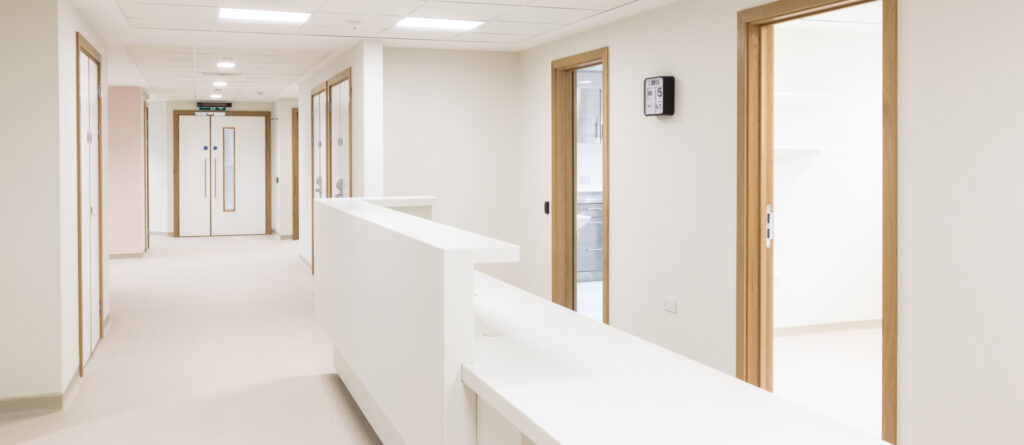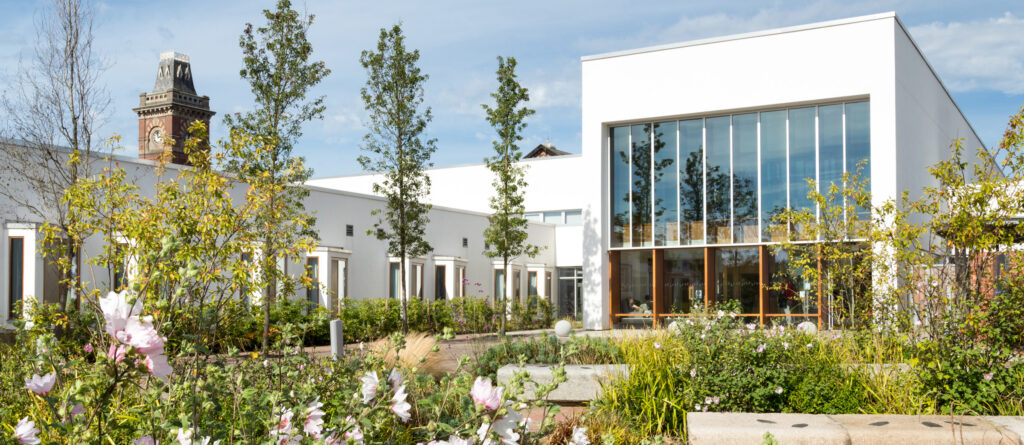
Hopewood Park Hospital
Forming a coastal community with spaces for recovery.
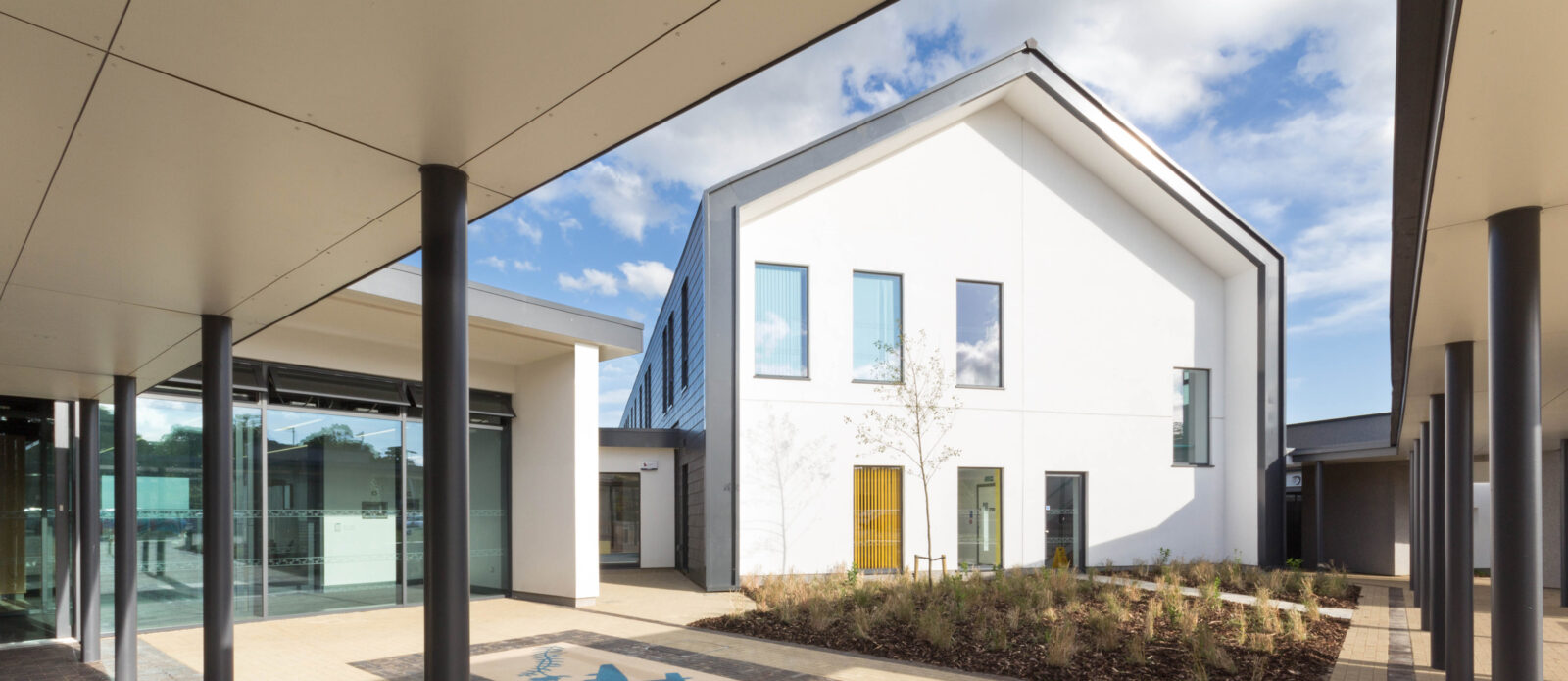
Location:
Ryhope, Sunderland
Client:
Cumbria, Northumberland, Tyne and Wear NHS Foundation Trust
Type:
Mental Health
Role:
Lead Consultant, Architect, Healthcare Planner, Interior Designer, Landscape Architect, BIM Coordinator
Value:
£50,000,000
Completed:
2014
Size:
10,800 m²
Hopewood Park is an exemplary 122-bed inpatient facility for adults and older people. The extraordinary site overlooking the North Sea inspired the creative evolution of the architecture, landscape, art, and wayfinding strategy. The elevated position, panoramic aspect and shelter contribute to the stepped form of a hillside community. A sense of neighbourliness is fostered through the clustering of wards and gardens around a communal heart.
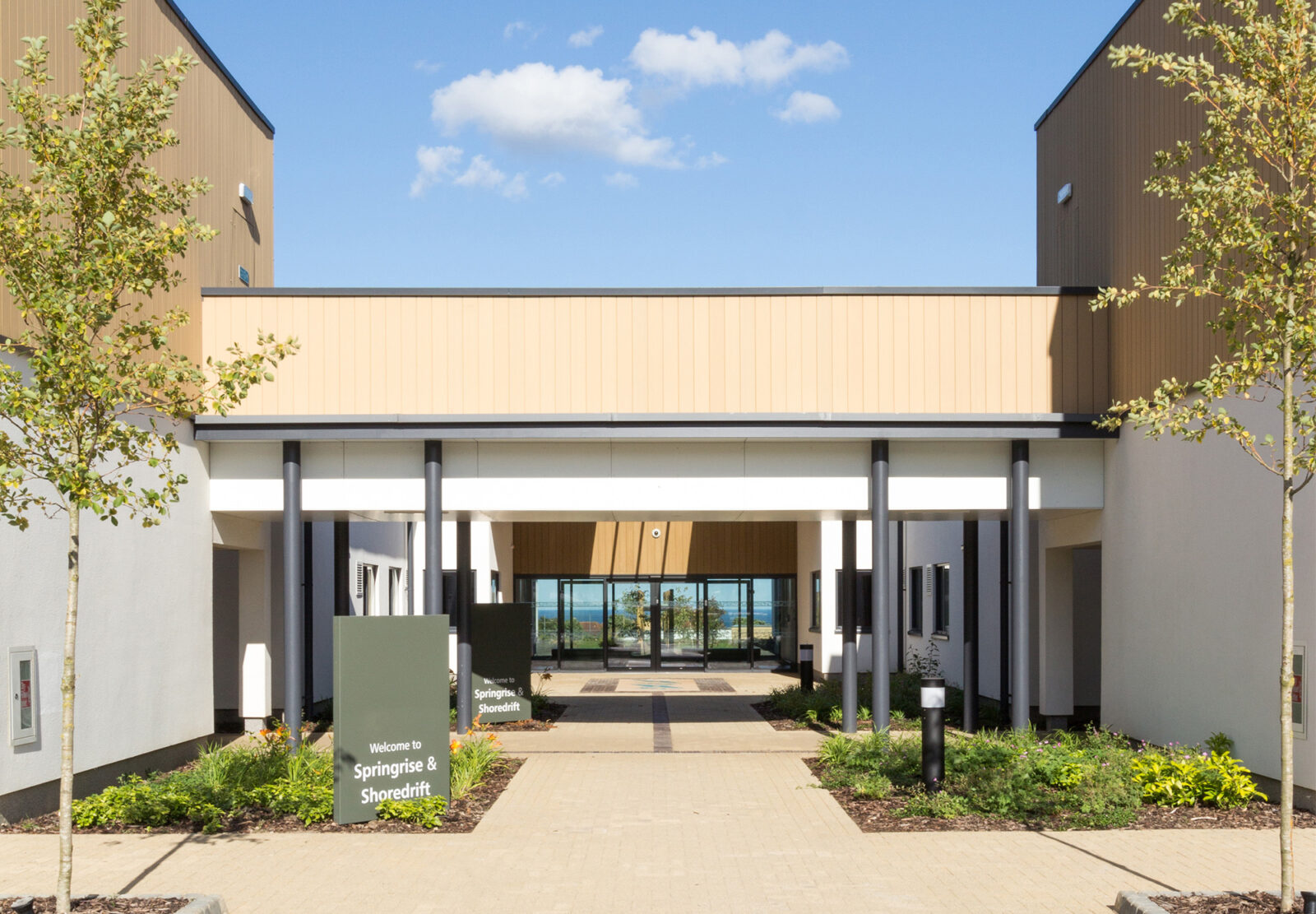
As you pass through the ward entrances you are greeted by an expansive view of the North Sea.
Exploiting the site’s natural features
The design concept is inspired by the name of the area, Ryhope, which in ancient terminology describes a riven valley cutting sharply through the landscape to the sea. This can be seen in the arrangement of routes through the site.
Making best use of the landscape’s natural features, inpatient accommodation is structured as a series of pavilions around a shared therapy and central facilities hub, with each ward accessed via a landscaped front garden. The arrangement creates generous relaxing places to enjoy long views to the coast and the rugged surrounding landscape.
It doesn’t feel like you’re walking into a psychiatric hospital; the grounds are lovely, there is lots of grass and open viewing areas to the sea. It has a calm and spacious feel to it.
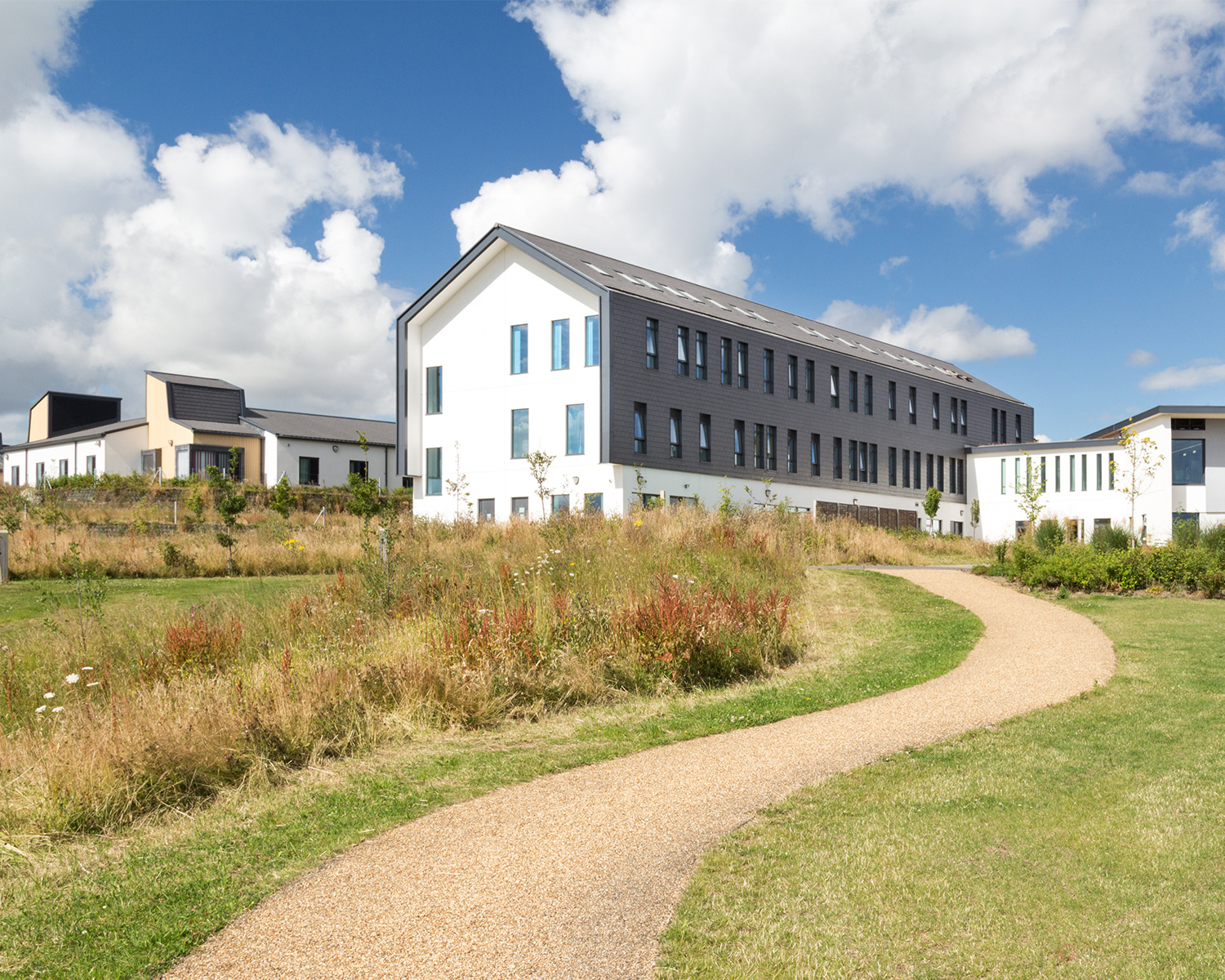
The hospital grounds are open with space to enjoy the natural setting.
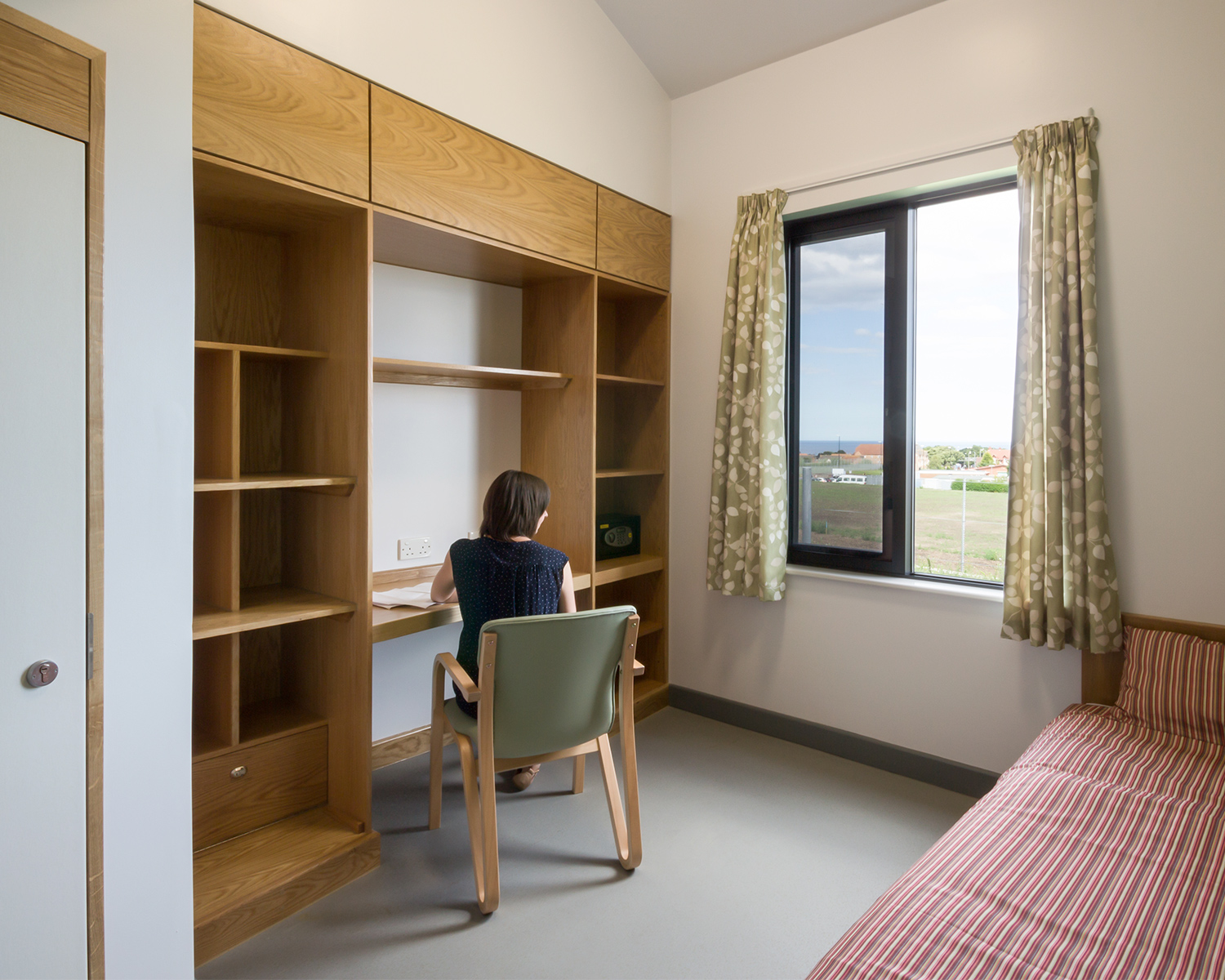
Bedrooms enjoy long views to the coast and the surrounding landscape.
Space planning which supports recovery
The standardised inpatient wards are planned to accommodate an integrated range of service configurations to support modern methods of care delivery. This is combined with a focus on creating recovery-centred therapeutic environments for patients and staff.
Single sided corridors offer an open and airy feel, provide generous views out, and aid engagement and supervision. Materials are natural and calming, a gentle nod to the surrounding mature landscape. The use of the building itself to create a secure boundary for external gardens and courtyards, eliminates the need for high fences and allows safe access to the outdoors.
Most hospitals and clinics are either overly ‘homely’ or have clinical interiors without natural light. Entering Hopewood Park you ‘fall straight out’ into the landscape on the other side – a masterstroke.
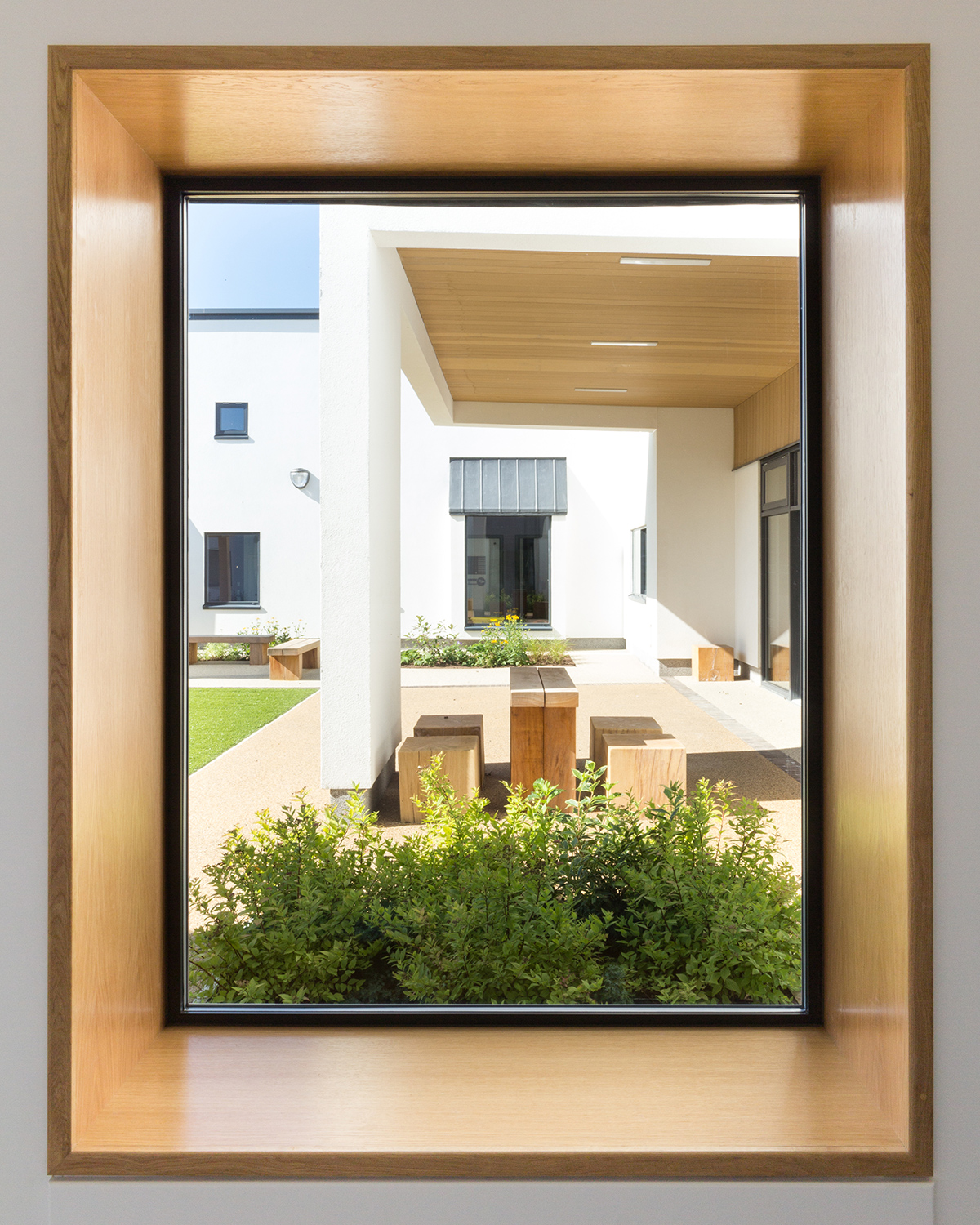
Timber picture frame windows provide glimpses of the secure internal courtyards.
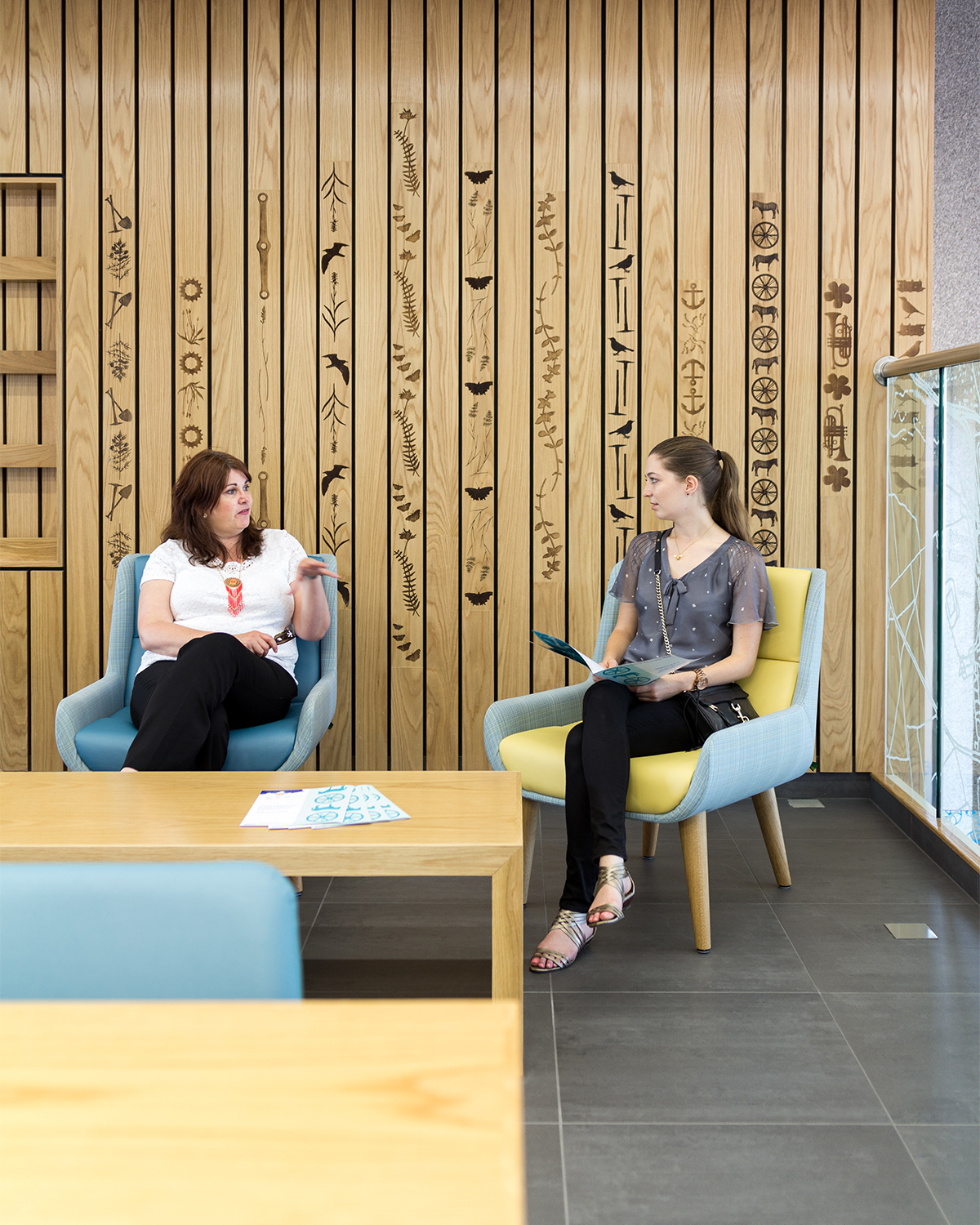
Natural finishes are used extensively to create a warm, homely feel.
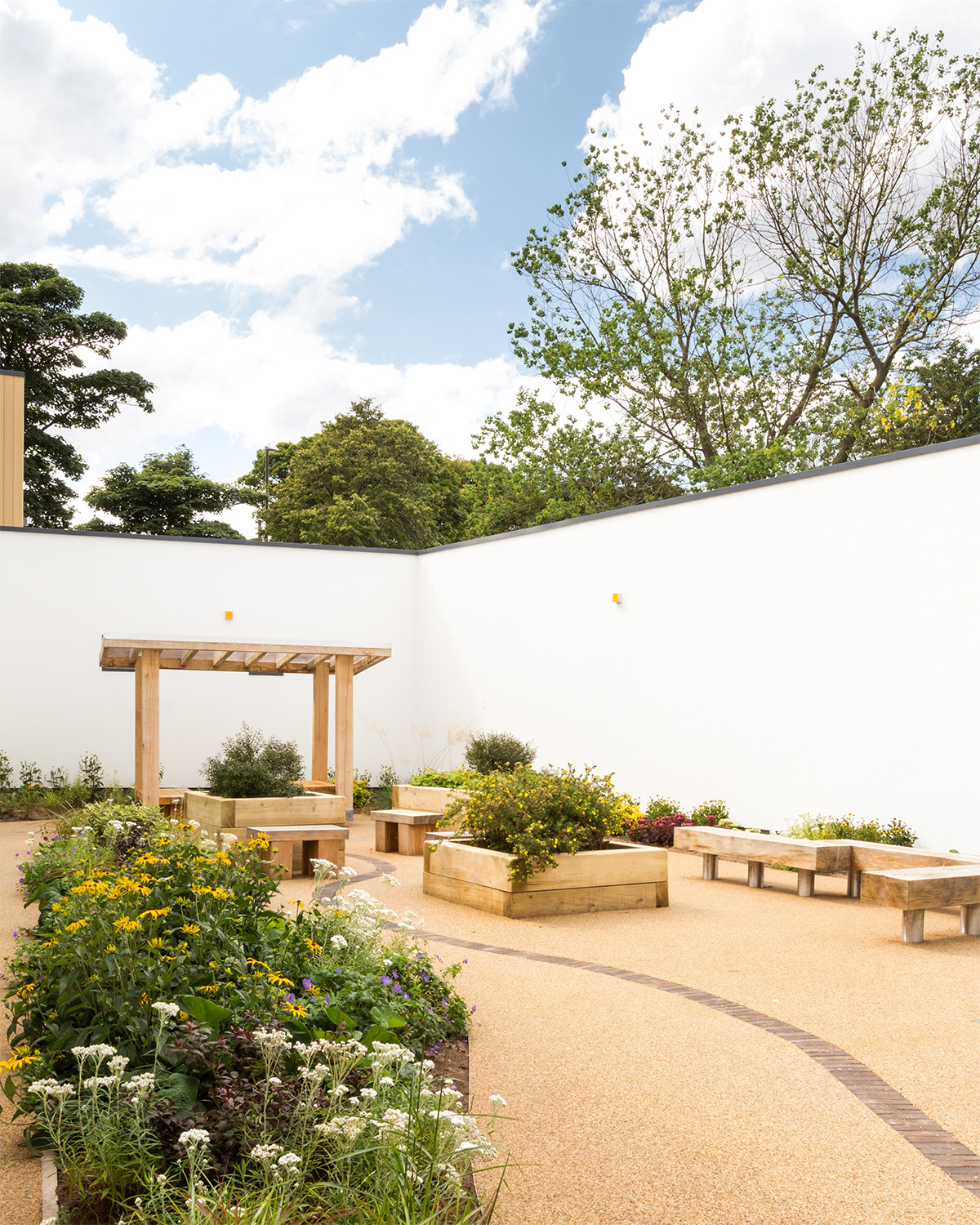
The surrounding mature landscape brings added character to the internal gardens.
Medical Architecture provided clear and easy to follow dialogue with good leadership. This set a good standard for the entire team. The design process was robust and dynamic with open dialogue throughout the entire process and the mature, long-term personal relationships and the ability to work together augmented the value-added aspects of project completion.
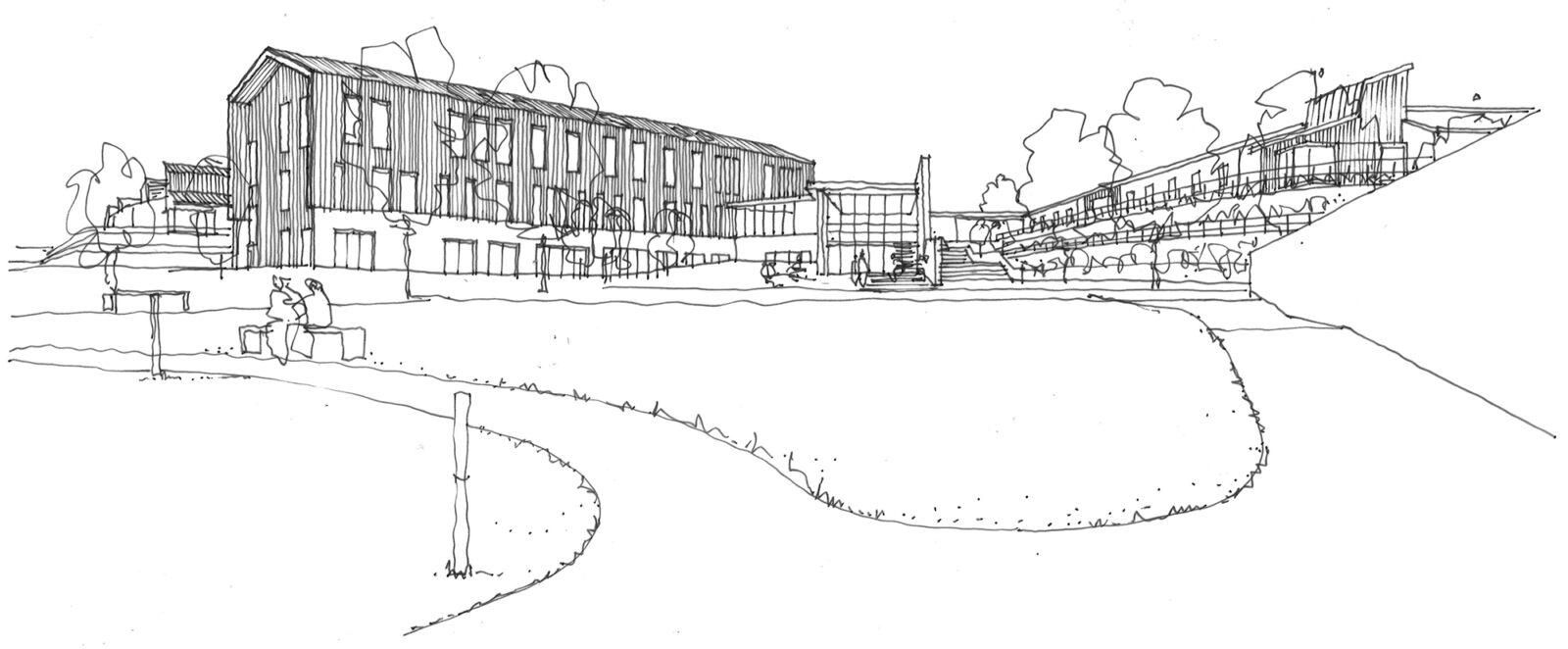
A community within a community
Public consultation with local people, service users, carers, and staff, was fundamental to ensuring that the new facility would reflect the mental healthcare needs of the region. This informed an approach to community which would form a central pillar to the scheme.
A sense of connection is created through building form, layout and the clustering of residential units around a shared therapy and activity centre. The wayfinding strategy is paramount; the materiality and approach to colour facilitates inclusion and identity, with symbols and colour references found in each ward.
Marvelous building – every consideration given for patient comfort and wellbeing. Everything planned with patient care being paramount.
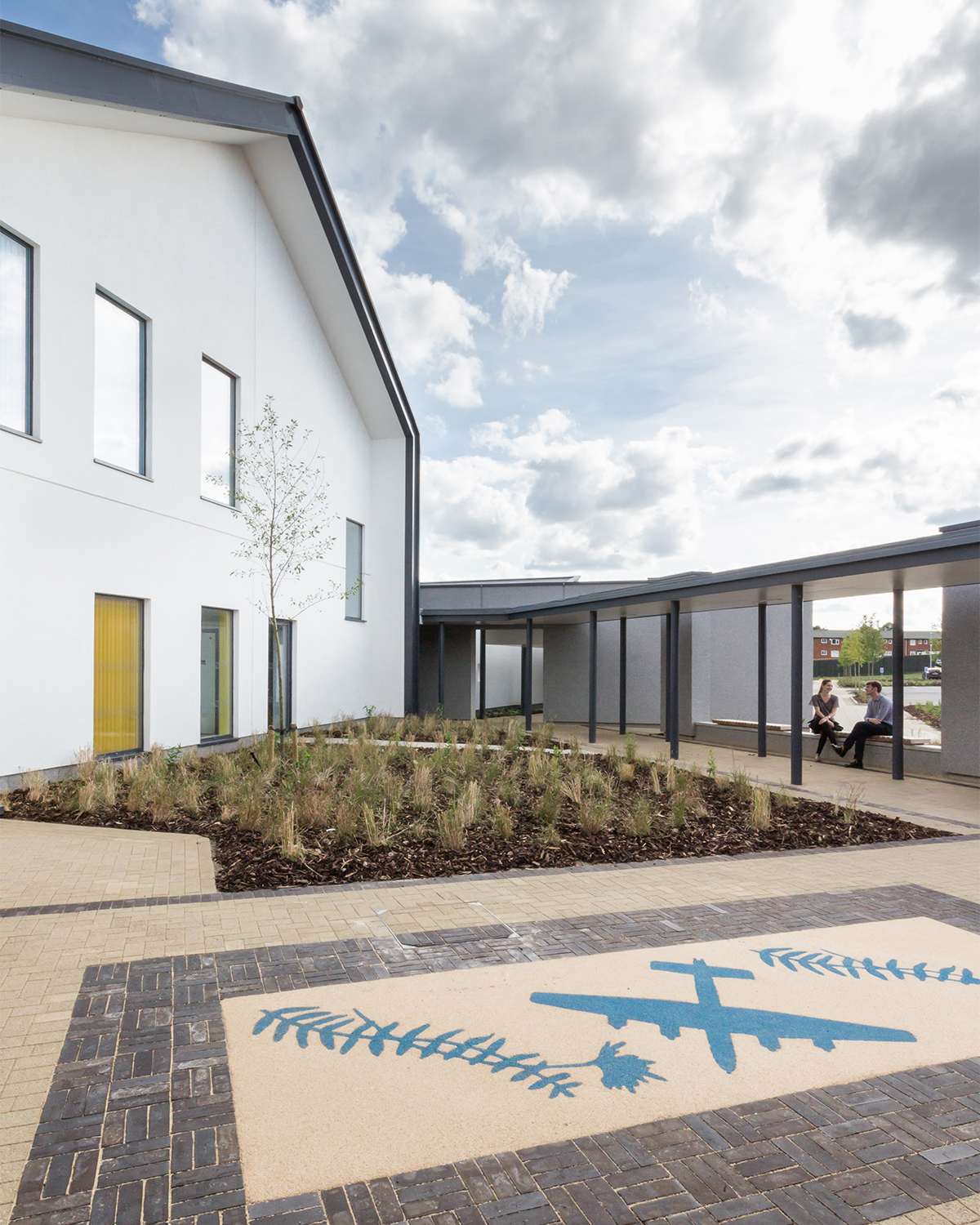
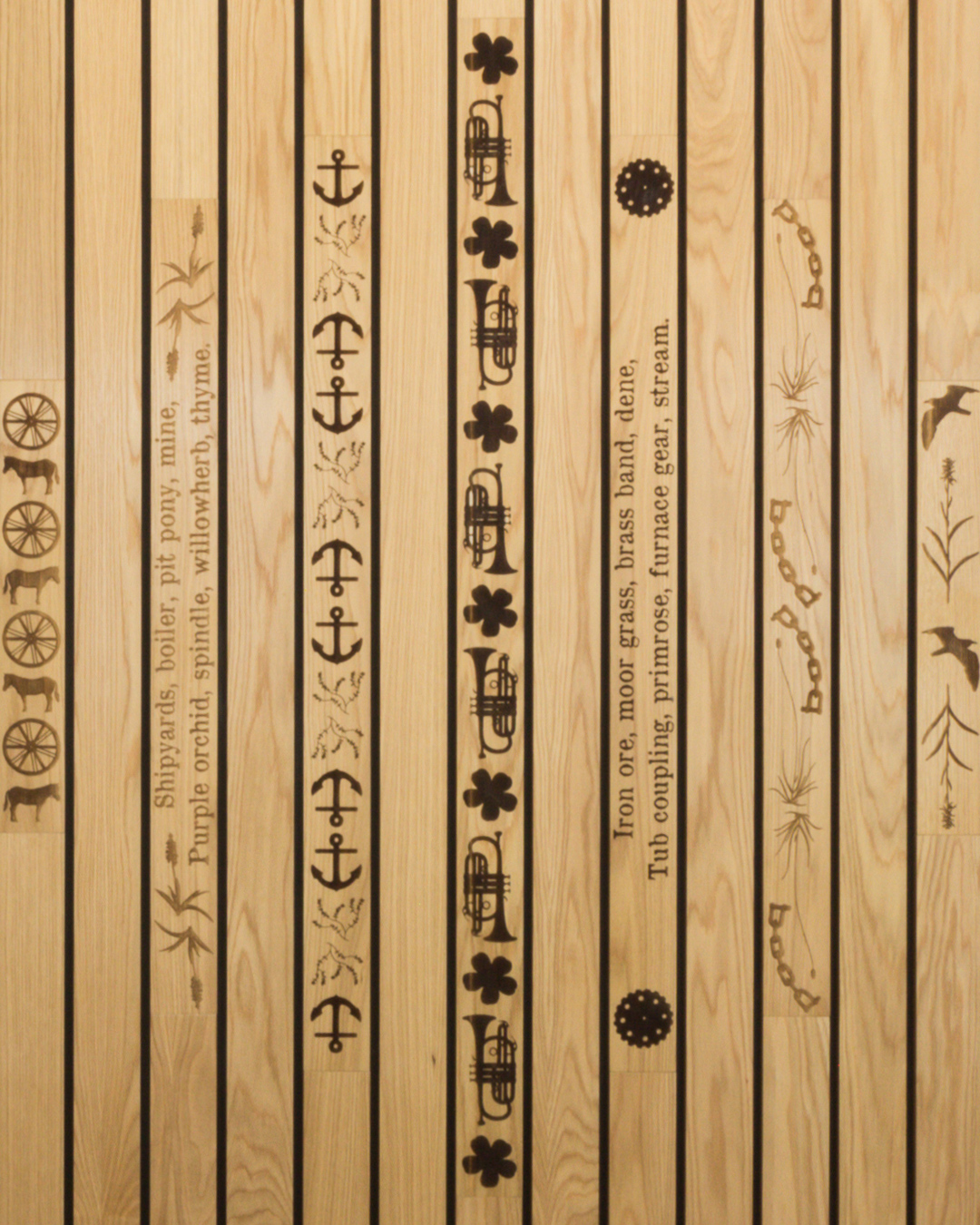
Integrated artwork is included throughout, included local poetry and iconography engraved into timber panels.
Outcomes
Early feedback following the move was extremely positive. A nine-month study of data at the Psychiatric Intensive Care Unit (PICU) on the site showed a 63% reduction in restraint and 55% reduction in seclusion on the ward. One contributing factor credited is the access to Exercise Therapy. Following the move, patients can now access an on-ward gym or take part in outdoor exercise in the ward courtyard gardens. The central shared gym is also very popular and well used. The study also noted a much-improved staff culture and approach.
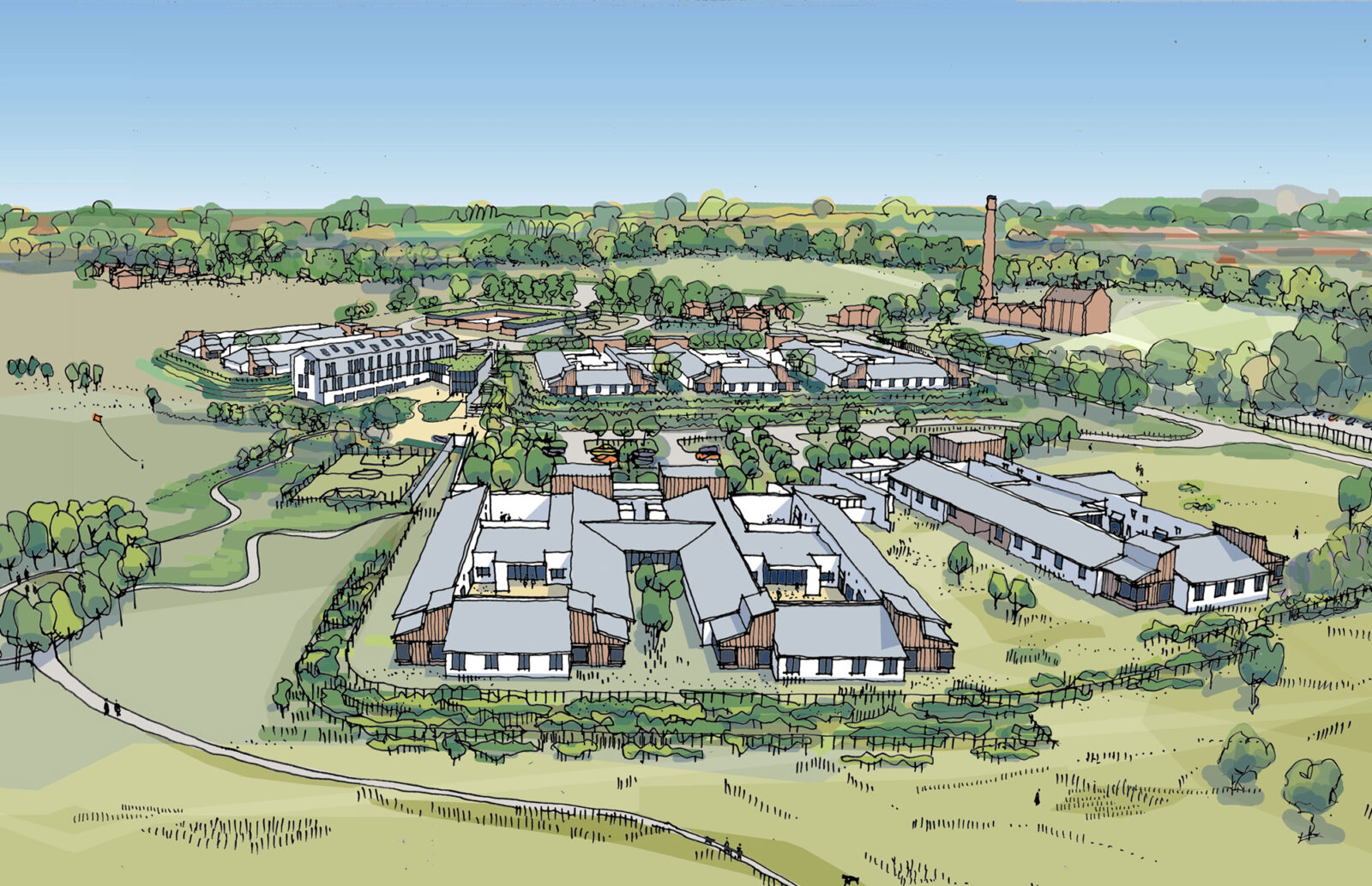
A sketch representation of the site masterplan.
Project Team

